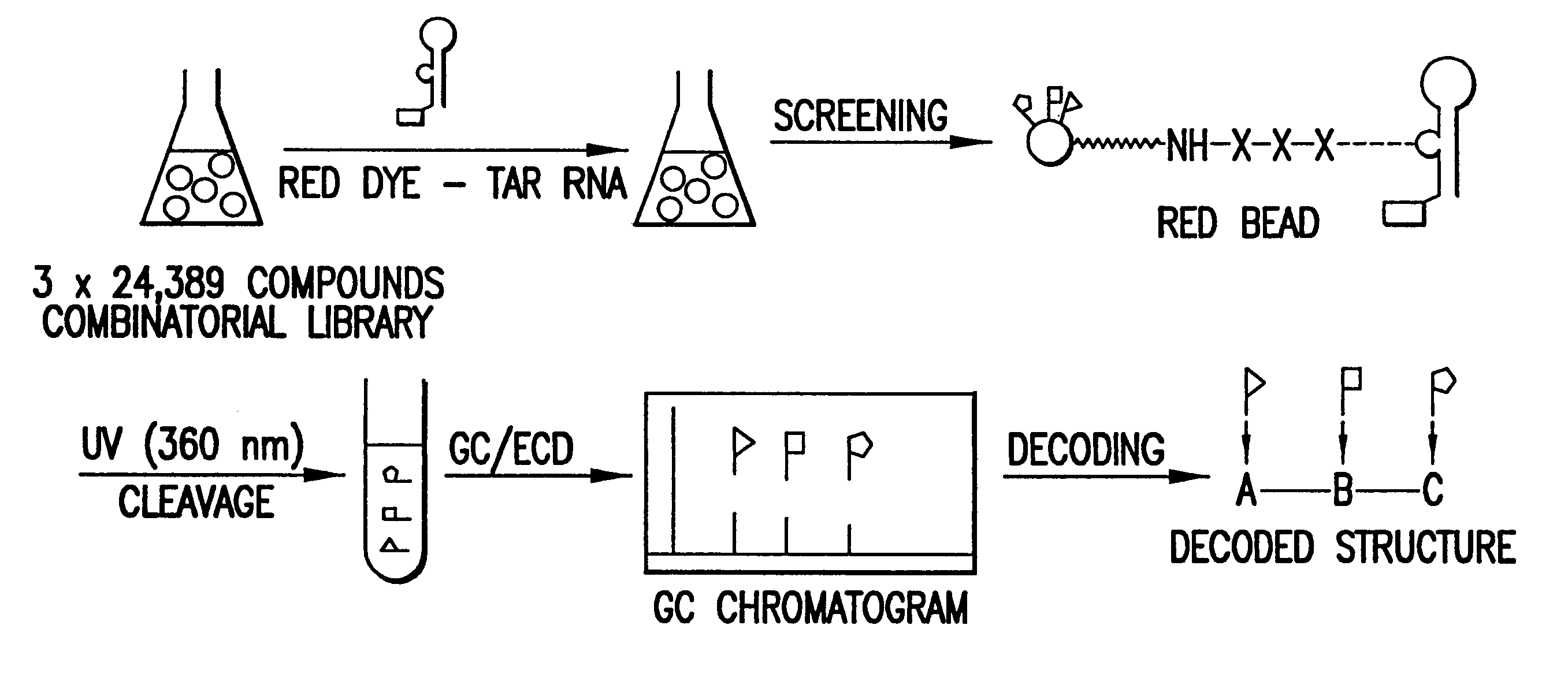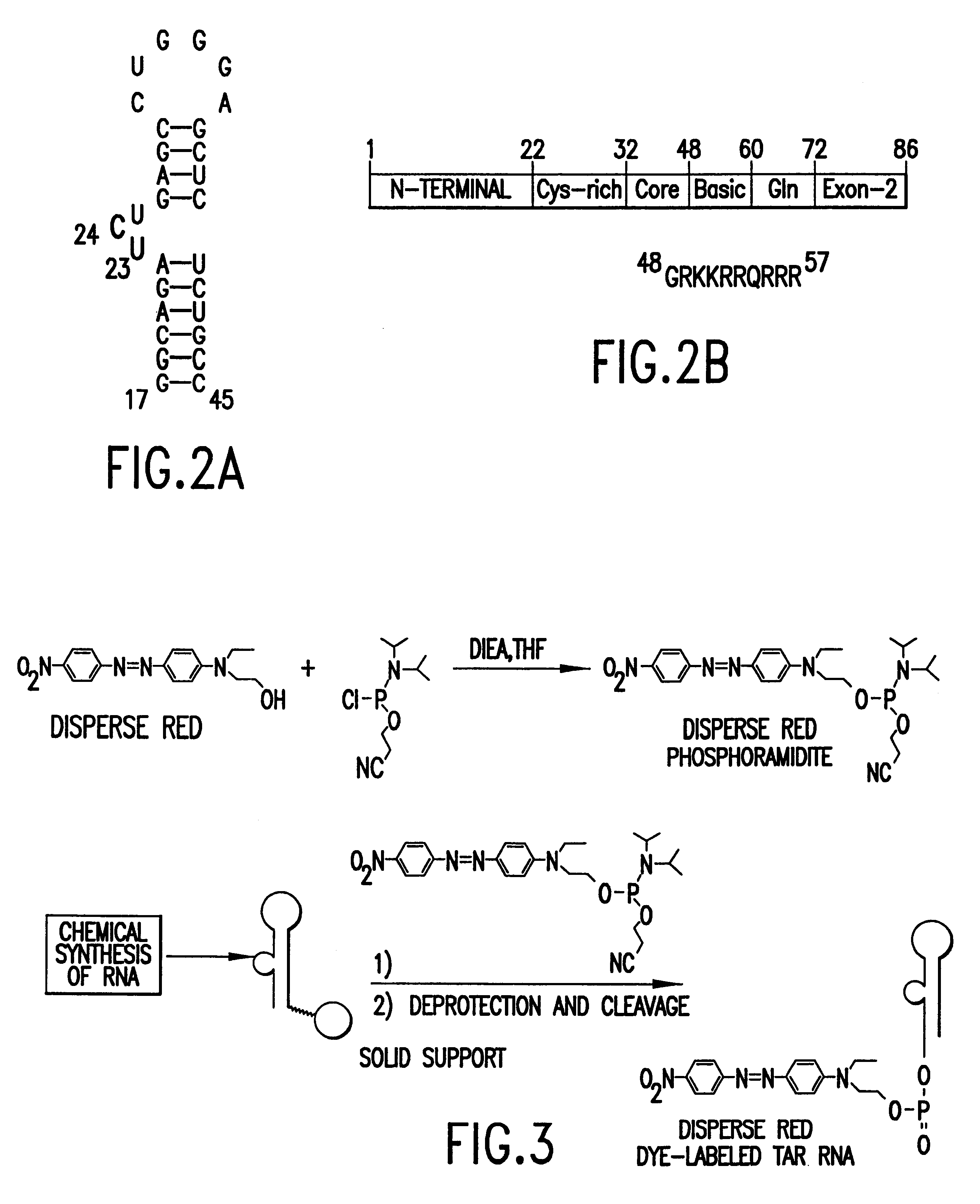Methods for identifying RNA binding compounds
a technology of rna binding and compound identification, applied in the field of compound identification, can solve the problems of difficult to design synthetic agents using general, simple recognition rules, and available methods for screening combinatorial compound libraries for compounds that bind to rna, and achieve the effect of increasing or decreasing the production of proteins
- Summary
- Abstract
- Description
- Claims
- Application Information
AI Technical Summary
Problems solved by technology
Method used
Image
Examples
Embodiment Construction
The present invention relates to a method for identifying a test compound that binds to RNA using a library of test compounds attached to a solid support. In particular, a plurality of test compounds is attached to a plurality of solid supports, e.g. polymer beads, with each solid support having substantially one type of test compound attached to its surface. The plurality of solid supports of the library is exposed in aqueous solution to RNA having a detectable label, forming a dye-labeled target RNA:support-attached test compound complex. Binding of target RNA molecules to a particular test compound labels the solid support, e.g., bead, comprising that compound, which can then be physically separated from other, unlabeled solid supports. Once labeled solid supports are identified, the chemical structures of the test compounds thereon can be determined, e.g., by reading a code on the solid support that correlates with the structure of the attached test compound. Thus, the methods o...
PUM
| Property | Measurement | Unit |
|---|---|---|
| wavelength | aaaaa | aaaaa |
| wavelength | aaaaa | aaaaa |
| wavelength | aaaaa | aaaaa |
Abstract
Description
Claims
Application Information
 Login to View More
Login to View More - R&D
- Intellectual Property
- Life Sciences
- Materials
- Tech Scout
- Unparalleled Data Quality
- Higher Quality Content
- 60% Fewer Hallucinations
Browse by: Latest US Patents, China's latest patents, Technical Efficacy Thesaurus, Application Domain, Technology Topic, Popular Technical Reports.
© 2025 PatSnap. All rights reserved.Legal|Privacy policy|Modern Slavery Act Transparency Statement|Sitemap|About US| Contact US: help@patsnap.com



